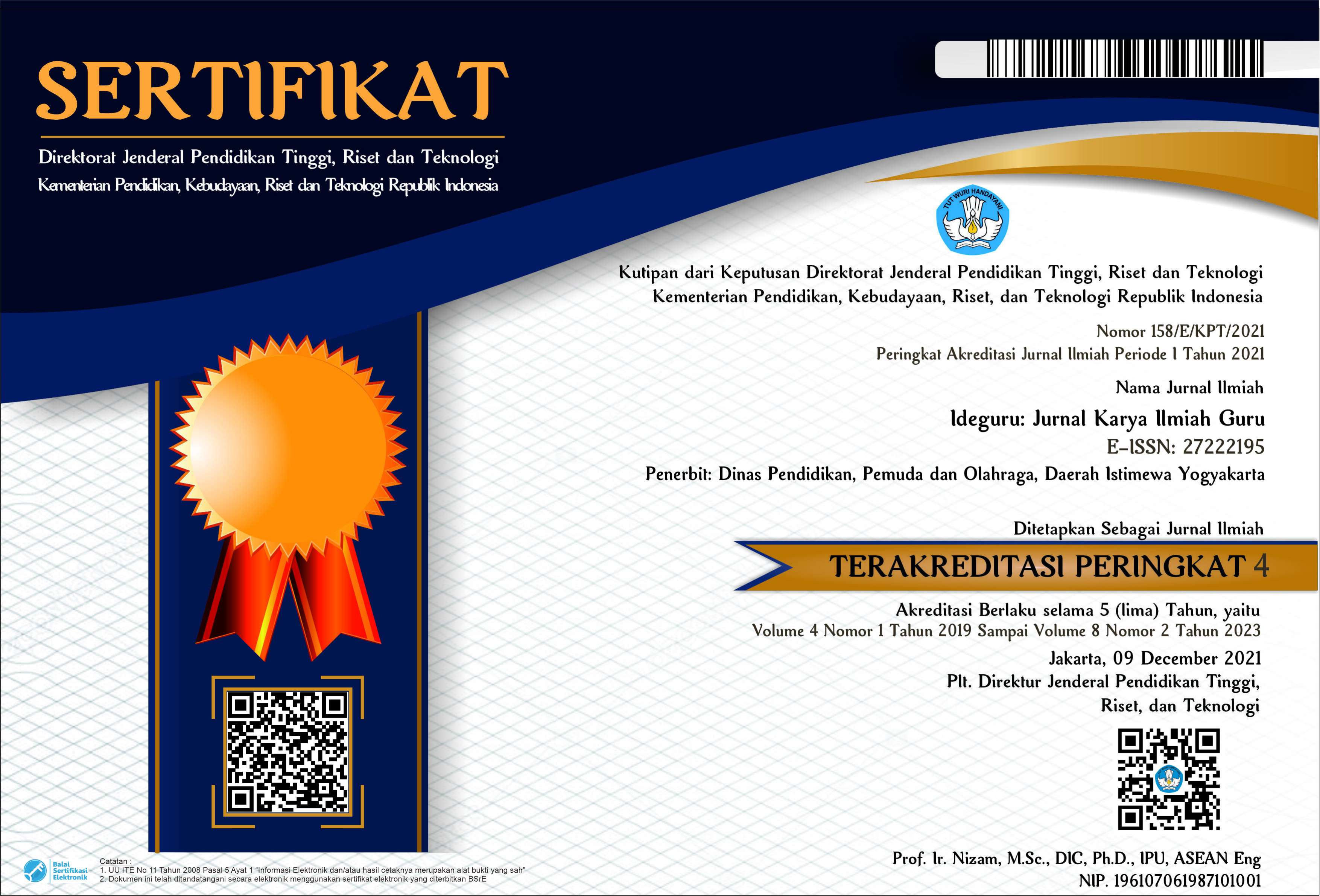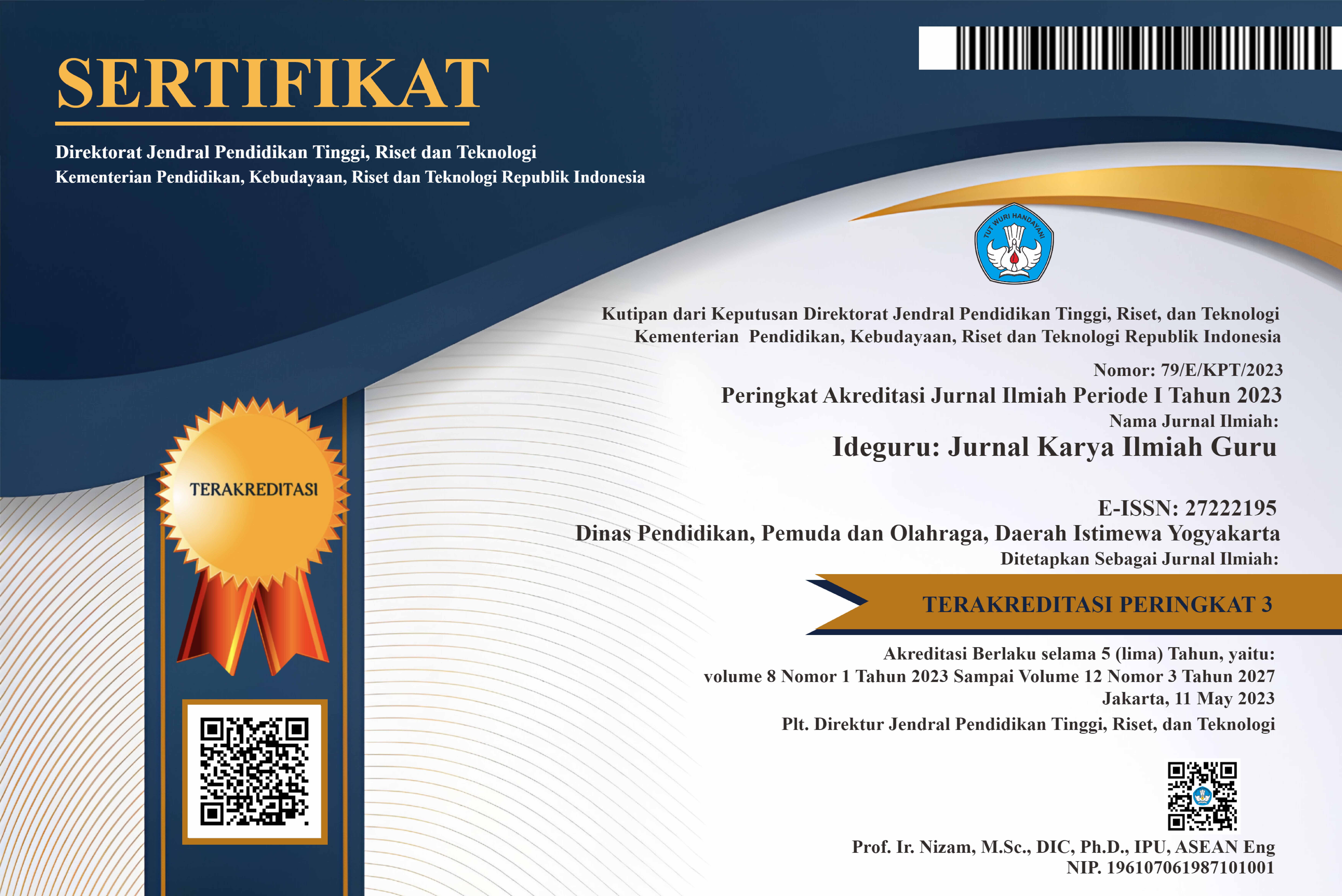Analisis Penerapan PJBL Berbasis STEM Terintegrasi Tri-N untuk Meningkatkan Kreativitas pada Pembelajaran IPA Siswa SD
Abstract
This research is motivated by science learning in one of the elementary schools in Yogyakarta which only transfers concepts from books to students by rote, learning is only carried out in the form of practice questions to face ASPD with a high graduation target without providing direct experience to students. This causes low creativity of students in producing a science learning product or project, for which it is necessary to take action to overcome these problems. This study aims to describe the learning innovations carried out, namely the application of Tri-N integrated STEM-based PJBL (Project Based Learning) in increasing creativity in science learning in elementary school students. This study uses a qualitative descriptive research method. The informants of this research consisted of teachers and students of class 6A of SDN Bhayangkara which amounted to 28 students. The data collection technique in this study uses observation, interviews, and documentation. The data analysis technique in this study is with qualitative descriptive analysis techniques. The results of the study show that the application of Tri-N integrated STEM-based PJBL (Project Based Learning) can increase students' creativity in creating science projects by associating several Science, Technology, Engineering, and Mathematics skills. In addition to encouraging creativity and motivation to learn, the application of this method also contributes to improving students' critical and collaborative thinking skills. They are more skilled in solving problems, working together in teams, and connecting science concepts to everyday life.
PDF Downloads
Copyright (c) 2025 Fenindita Yunika Ningrum, Qomariah Binti Zulaihah, Banun Hafifah Cahyo Khosiyono, Ana Fitrotun Nisa, Berliana Heru Cahyani

This work is licensed under a Creative Commons Attribution 4.0 International License.

 DOI:
DOI:













